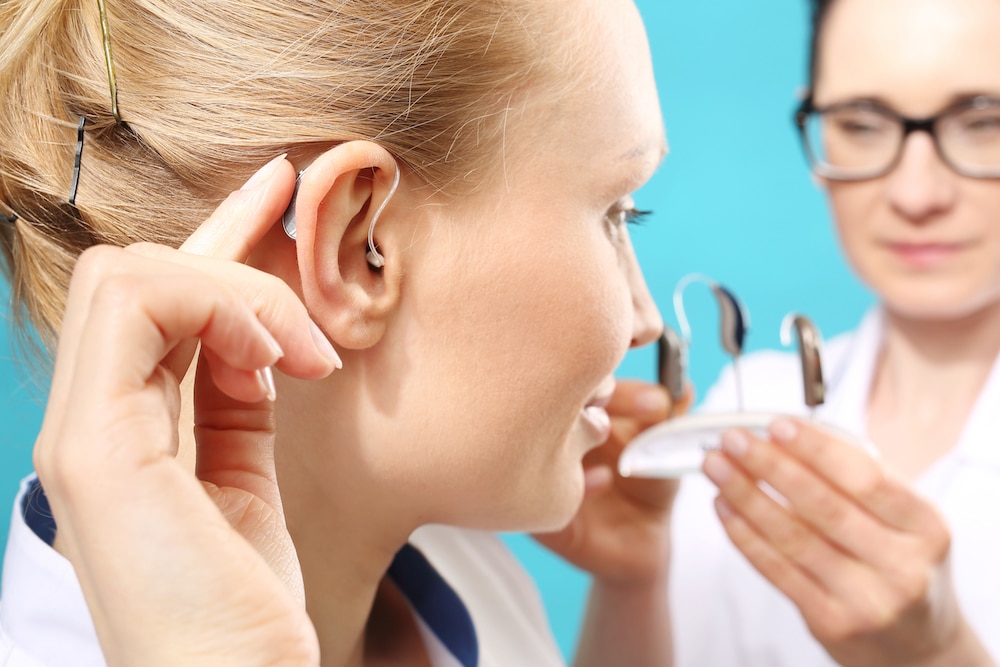If you have hearing loss and you have been advised that hearing aids will benefit you, choosing your hearing aids and having them fitted is the next step. When you get your hearing aids fitted for the first time, you might be uncertain about what’s going to happen. Having your hearing aids fitted is necessary to ensure they feel comfortable and that they deliver the right level of sound to help improve your hearing. When you have your hearing aids fitted, make sure that you leave adequate time for your appointment so that you don’t need to rush off.

Communicating your wants and needs
During the process of being fitted for your hearing aids, communication is essential. From choosing the right device for your needs to ensuring they fit comfortably, your audiologist will communicate with you about your wants, needs and feelings. When you have your hearing aids fitted, you will be asked about what you’re hearing and you might be given a survey or some questions to answer. You can use this opportunity to help your audiologist get the best fit for your hearing aids. Don’t be afraid to ask any questions that you might have for your audiologist too.
Finding the right device
Before your hearing aids can be fitted, you have to choose the ones that you want. This might happen at the same appointment as your fitting, or you might be asked to come back for a fitting. Some hearing aids require that an earmold is made to fit your ear before the hearing aid can be fitted. Your audiologist can help you to find the right device by taking your hearing levels into account, as well as by understanding your lifestyle and what sort of features you’re looking for. They can suggest some options that will meet your needs.
Testing your new hearing aids
Your hearing aids need to be programmed and tested to ensure they will work well for you. Your audiologist will carry out real ear measures to ensure that your hearing aids are providing the right level of sound for you. This involves putting a thin tube into your ear canal, which is attached to a microphone. It first measures the volume of sound near your eardrum without a hearing device, and then your audiologist will retake measurements with your hearing aids inserted. This helps to ensure that the sound level is comfortable for you. You can talk to your audiologist about how your hearing aids feel, both in terms of sound and how they sit in your ears.
Learn how to use your hearing aids
Your audiologist will help you to learn how to use your hearing aids so that you leave feeling confident that you know how they work. They will show you how to put them in and take them out, how to turn them on and off, and how to change the batteries. They can also show you how to clean and care for your hearing aids, as well as how you can use the different functions available. Now is the time to ask any questions that you have about your hearing aids, but you can always ask questions at later appointments too.
What to expect from your hearing aids
You will also learn what to expect from your hearing aids when you first start using them. There is a period of adjustment that you need to be aware of when you begin wearing hearing aids. Many people take several years to start using hearing aids, so finally getting them can make a big difference. However, you need some time to get used to them, and things might seem strange at first. You might find that your voice sounds strange or that many sounds seem a lot louder. While it’s normal for things to feel different, you shouldn’t feel any pain or discomfort.
Follow-up appointments
After having your hearing aids fitted, you will likely need to attend further appointments to make sure they’re working well for you. You might require several adjustments to get your hearing aids just right. If you have any problems or your hearing aids don’t feel comfortable, don’t hesitate to make an appointment and return to your audiologist.
For more about hearing aid fittings, get in touch with Sound Advice by calling (818) 748-8613. We can help you with all of your hearing health needs, from hearing tests to hearing aid fittings and more.